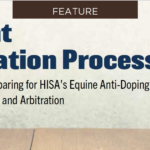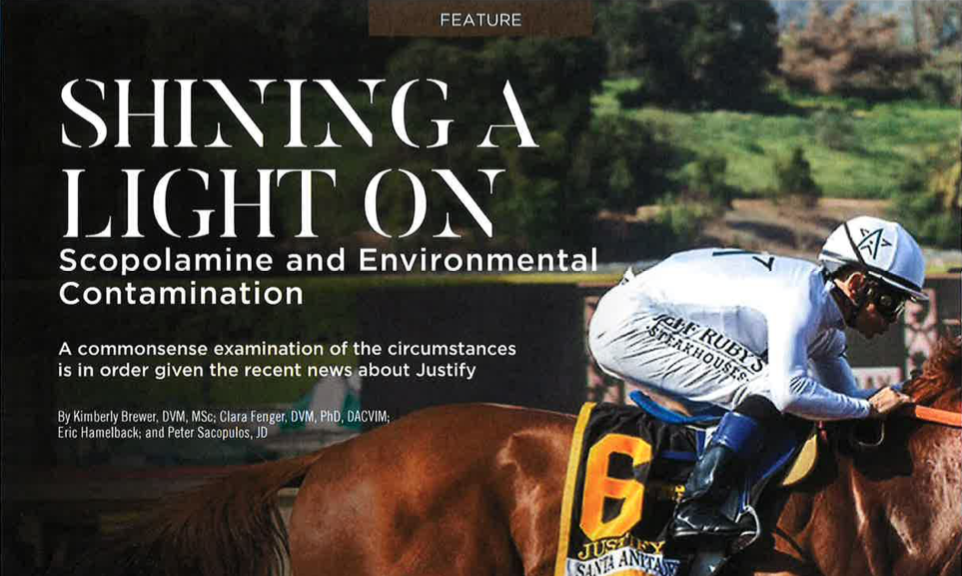Written by Clara K. Fenger, DVM, PhD, DACVIM; Kimberly Brewer, DVM, MSc; Peter J. Sacopulos, JD; and Eric Hamelback
First published in North American Trainer issue 54 – Winter 2019
On September 11 of this year, news broke that 2018 Triple Crown winner Justify, trained by Bob Baffert had tested positive for a little-known substance called scopolamine in a post-race drug test from the Santa Anita Derby. Worth 100 Kentucky Derby points, the Santa Anita Derby amounts to a “win and you’re in” event for America’s most famous horse race. Once the new hit, social media blew up with wild accusations of cover-up and corruption, despite very few facts being available. Horse racing media, from traditional outlets to all sorts of online blogs, and even mainstream media weighed in before any facts had come to light.
The dust still has not yet settled in the case. However, some of the details are now known, and with the benefits of time, reflection and actual facts, the circumstances can now be laid out and conclusions drawn. There is a message for the entire racing industry hidden in the details that extend far beyond the particulars of any case.
What is Scopolamine?
Scopolamine is a plant alkaloid and prescription medication used for nausea in humans. A closely related synthetic compound, N-butylscopolamine (Buscopan), is approved for use for spasmodic colic in horses. Scopolamine slows intestinal motility by blocking a neurotransmitter called acetylcholine, but such anticholinergic drugs also may be used for bronchodilation, or relaxing the smooth muscles of the airways and improving air flow in the lungs. It is this latter action that puts this class of drug among the banned substances in horse racing. Theoretically, such drugs could improve performance by improving air flow. Of course, there is actually no evidence that such an effect is achieved in racehorses, but most banned drugs are classified by their theoretical mechanism of action and not their actual effect on the animal.






